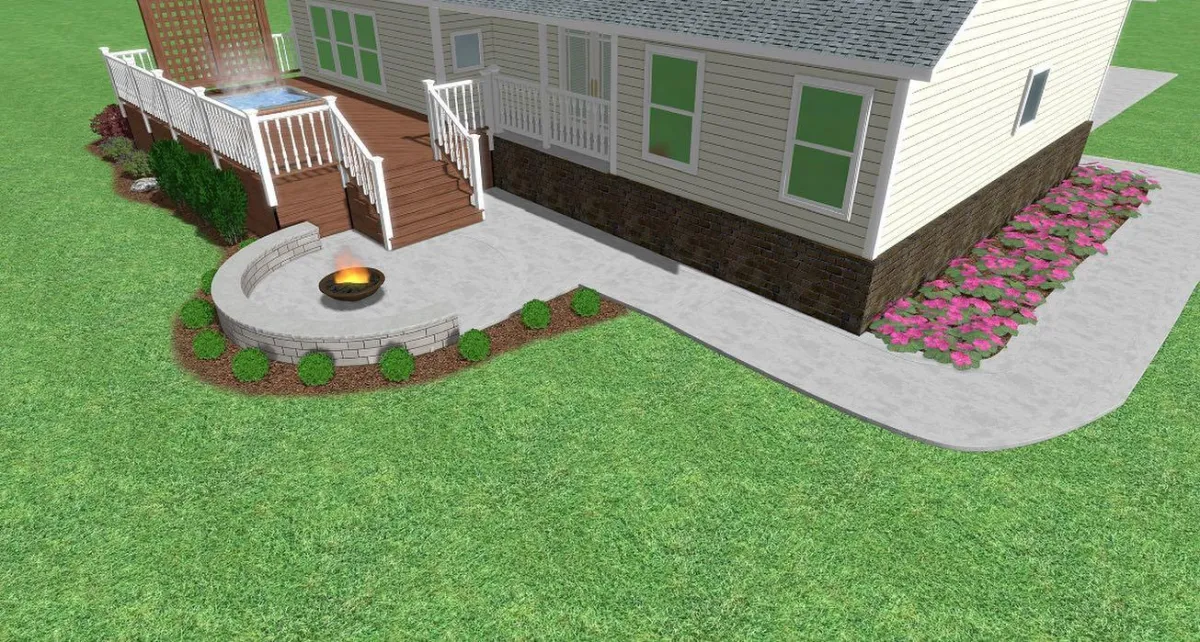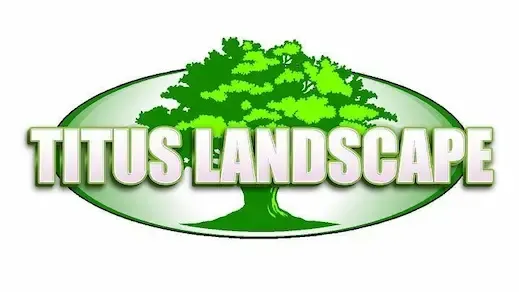Blogs

What Are The Best Practices For Sustainable Landscape Design?
Best practices for sustainable landscape design involve incorporating native plants to reduce water use, implementing efficient irrigation systems like drip irrigation, enhancing soil health through composting and mulching, using permeable paving materials to minimize stormwater runoff, opting for energy-efficient outdoor lighting and renewable energy sources, creating habitats for local wildlife, choosing sustainable materials for construction, adopting organic gardening practices, educating stakeholders about sustainability, and planning for long-term climate resilience.
In today's environmentally conscious world, sustainable landscape design plays a crucial role in creating outdoor spaces that not only enhance beauty but also promote ecological health and resource efficiency. At Titus Landscape, we believe in transforming spaces with creativity while ensuring minimal environmental impact. Here’s how you can achieve sustainable landscape design excellence:
Key Takeaways:
Use of Native and Drought-Tolerant Plants
Opt for plants indigenous to your region that thrive in local climate conditions.
Incorporate drought-resistant species to reduce water consumption and maintenance needs.
Foster biodiversity by selecting a diverse range of plants that support local wildlife.
Water-Efficient Strategies
Implement drip irrigation systems and smart controllers for precise water management.
Harvest rainwater to supplement irrigation needs, reducing reliance on potable water.
Install permeable surfaces to allow rainwater infiltration and minimize runoff.
Promoting Soil Health
Prevent soil erosion with techniques such as mulching and using groundcover plants.
Enhance soil fertility by adding compost and organic fertilizers.
Protect existing plants and topsoil during construction to maintain soil structure and health.
Conservation of Material Resources
Opt for recycled, recyclable, and locally sourced materials to minimize environmental footprint.
Choose durable materials that require less maintenance and replacements.
Recycle construction waste to reduce landfill contributions and promote sustainability.
Community Engagement
Involve the local community in the design process to foster a sense of ownership and pride.
Educate clients and the public on the benefits of sustainable landscaping practices.
Design outdoor spaces that integrate seamlessly with community identity and daily life.
Use of Native and Drought-Tolerant Plants in Landscape Design
Using native and drought-tolerant plants in landscape design is a cornerstone of sustainable practices, offering numerous benefits for both the environment and homeowners. Native plants are species naturally occurring in a specific region and have adapted over time to local climate conditions, soil types, and wildlife interactions. Incorporating these plants into landscaping projects not only preserves biodiversity but also reduces water usage and maintenance requirements.
Benefits of Using Native and Drought-Tolerant Plants:
Water Efficiency: Native plants are well-suited to local precipitation levels, requiring less supplemental watering once established. Their deep root systems help them access water more efficiently, making them resilient during drought conditions.
Low Maintenance: These plants typically require less upkeep compared to non-native species because they are adapted to local soil conditions and pests. This reduces the need for chemical fertilizers and pesticides, promoting healthier ecosystems.
Wildlife Support: Native plants provide essential habitat and food sources for local wildlife, including birds, insects, and small mammals. They contribute to the overall biodiversity of the area, supporting a balanced and resilient ecosystem.
Environmental Adaptability: By selecting plants that naturally occur in the region, landscape designers can create landscapes that are better able to withstand environmental stressors such as temperature fluctuations and soil erosion.
Aesthetic Appeal: Native plants often have unique colors, textures, and growth habits that contribute to the visual appeal of a landscape. They can be used creatively to design landscapes that reflect the natural beauty of the local environment.
Examples of Native and Drought-Tolerant Plants:
California Poppy (Eschscholzia californica): Known for its vibrant orange flowers, this drought-tolerant plant thrives in dry, sunny conditions common in California and other southwestern states.
Texas Sage (Leucophyllum spp.): A hardy shrub with silver-gray foliage and purple flowers, well-adapted to the arid climate of the southwestern United States.
Lavender (Lavandula spp.): This fragrant herb is drought-tolerant once established and attracts pollinators such as bees and butterflies, making it a versatile choice for water-wise gardens.
Switchgrass (Panicum virgatum): A native grass species known for its tolerance to a wide range of soil conditions and its ability to provide erosion control and wildlife habitat in prairie and meadow landscapes.
Incorporating native and drought-tolerant plants into landscape designs not only conserves water and supports local wildlife but also enhances the beauty and resilience of outdoor spaces.
Water-Efficient Strategies in Landscape Design
Water-efficient strategies are crucial in landscape design to minimize water consumption, promote sustainability, and maintain healthy outdoor environments. By implementing these strategies, homeowners and landscapers can reduce water waste and create landscapes that thrive with minimal irrigation.
Key Water-Efficient Strategies:
Drip Irrigation Systems: These systems deliver water directly to the base of plants, minimizing evaporation and runoff. They are highly efficient in delivering water where it's needed most, reducing water usage by up to 50% compared to traditional sprinkler systems.
Smart Irrigation Controllers: Smart controllers use weather data and soil moisture sensors to adjust watering schedules automatically. By optimizing irrigation based on real-time conditions, they prevent overwatering and ensure plants receive adequate moisture.
Rainwater Harvesting: Harvesting rainwater from roofs and other surfaces allows homeowners to collect and store water for landscape irrigation. This reduces reliance on municipal water sources and supplements irrigation during dry periods.
Permeable Surfaces: Installing permeable pavements and pavers allows rainwater to infiltrate into the soil rather than running off into storm drains. This helps recharge groundwater, reduces erosion, and minimizes water pollution.
Mulching: Applying mulch around plants helps retain soil moisture, suppress weeds, and regulate soil temperature. Organic mulches such as wood chips or bark also improve soil fertility as they decompose.
Benefits of Water-Efficient Landscape Design:
Conserves Water: Efficient irrigation methods and water-saving practices reduce overall water consumption, lowering utility bills and conserving a precious natural resource.
Saves Money: By reducing water usage and maintenance costs associated with landscaping, homeowners can achieve long-term savings.
Promotes Plant Health: Providing plants with the right amount of water at the right time promotes healthy root development and reduces stress, making plants more resilient to drought and diseases.
Environmental Benefits: Water-efficient landscapes contribute to environmental sustainability by reducing pressure on freshwater resources and minimizing energy use associated with water treatment and distribution.
Compliance with Regulations: In regions with water restrictions or drought-prone climates, implementing water-efficient strategies ensures compliance with local regulations and promotes responsible water stewardship.
Incorporating water-efficient strategies into landscape design not only benefits the environment and conserves resources but also enhances the beauty and functionality of outdoor spaces
Promoting Soil Health in Landscape Design
Promoting soil health is fundamental in landscape design, ensuring the long-term vitality and sustainability of outdoor spaces. Healthy soil provides a supportive environment for plants to thrive, enhances water retention, and reduces the need for chemical inputs. Here are key practices to promote soil health in landscape design:
Key Practices for Promoting Soil Health:
Mulching: Applying organic mulch such as wood chips, bark, or compost around plants helps retain soil moisture, suppress weeds, and improve soil structure as it decomposes.
Composting: Adding compost to soil enriches its organic matter content, enhances nutrient availability, and fosters beneficial microbial activity essential for plant growth.
Avoiding Soil Compaction: Minimize soil compaction by avoiding heavy machinery on garden beds and using mulch or groundcover plants to protect the soil surface.
Crop Rotation and Cover Cropping: Rotate plant species seasonally to prevent nutrient depletion and disease buildup. Cover cropping with nitrogen-fixing plants improves soil fertility and structure during off-seasons.
Reducing Chemical Inputs: Limiting synthetic fertilizers and pesticides preserves soil biodiversity and minimizes environmental impact. Opt for organic alternatives that nourish the soil without harmful residues.
Benefits of Promoting Soil Health:
Enhanced Plant Growth: Healthy soil supports robust root development and nutrient uptake, resulting in stronger, more resilient plants.
Improved Water Retention: Soil rich in organic matter retains water more effectively, reducing the frequency of irrigation and promoting drought resistance.
Environmental Sustainability: By reducing reliance on chemical inputs and promoting natural soil fertility, landscapers contribute to sustainable gardening practices and environmental stewardship.
Erosion Prevention: Healthy soil structure with adequate organic matter and microbial activity helps prevent erosion, maintaining landscape integrity and reducing sediment runoff.
Long-Term Cost Savings: Investing in soil health reduces the need for costly amendments and treatments over time, resulting in lower maintenance expenses and healthier landscapes.
Incorporating these soil health practices into landscape design not only benefits plant vitality and ecosystem resilience but also fosters a sustainable approach to gardening.
Conservation of Material Resources in Landscape Design
Conservation of material resources is integral to sustainable landscape design, aiming to minimize environmental impact while maximizing efficiency and durability. By choosing wisely and reusing materials where possible, landscapers can create beautiful outdoor spaces that are both eco-friendly and cost-effective.
Key Strategies for Conservation of Material Resources:
Use of Recycled Materials: Incorporate recycled materials such as reclaimed wood, recycled plastic, or salvaged stone into landscape features like decking, furniture, or retaining walls. This reduces demand for new materials and decreases waste in landfills.
Locally Sourced Materials: Opt for materials sourced locally to reduce transportation emissions and support local economies. Locally sourced stone, gravel, and plants not only minimize carbon footprint but also blend harmoniously with the natural surroundings.
Durable Materials: Select durable materials that withstand weathering and require minimal maintenance. Examples include natural stone, concrete pavers, and metal fixtures, which offer longevity and reduce the need for frequent replacements.
Reuse of Construction Waste: Recycle and reuse construction debris such as concrete rubble or asphalt for pathways, base materials, or decorative elements. This practice minimizes landfill waste and conserves resources.
Design Efficiency: Plan landscape layouts and features efficiently to optimize material usage and minimize waste during construction. Smart design choices can enhance functionality while reducing the overall footprint of materials needed.
Benefits of Conservation of Material Resources:
Environmental Sustainability: Reducing resource extraction and waste generation lowers the ecological footprint of landscape projects, contributing to environmental conservation and sustainability goals.
Cost Savings: Using recycled and locally sourced materials often costs less than new materials, offering upfront savings and long-term economic benefits through reduced maintenance and replacement costs.
Aesthetic Value: High-quality, sustainable materials enhance the visual appeal of landscapes, adding unique textures and colors that complement natural surroundings and architectural features.
Regulatory Compliance: Meeting local building codes and sustainability standards by using eco-friendly materials demonstrates commitment to environmental responsibility and regulatory compliance.
Community Engagement: Incorporating sustainable practices in material selection fosters community pride and appreciation for environmentally conscious landscaping, inspiring others to adopt similar approaches.
Community Engagement in Sustainable Landscape Design
Community engagement plays a pivotal role in sustainable landscape design, fostering collaboration, education, and stewardship among stakeholders. By involving the community in the design process and promoting sustainable practices, landscapers can create outdoor spaces that resonate with local values and enhance collective well-being.
Key Aspects of Community Engagement in Sustainable Landscape Design:
Collaborative Design Workshops: Organize workshops or charrettes where community members, including residents, local businesses, and organizations, can provide input and ideas for landscape projects. This collaborative approach ensures that designs reflect community needs and preferences.
Education and Outreach Programs: Conduct educational sessions or outreach programs to raise awareness about the benefits of sustainable landscaping practices. Topics may include water conservation, native plant gardening, and wildlife habitat enhancement, empowering community members to make informed decisions.
Volunteer Opportunities: Offer volunteer opportunities for community members to participate in planting events, habitat restoration projects, or maintenance activities. This hands-on involvement fosters a sense of ownership and pride in local green spaces.
Public Art and Interpretive Elements: Integrate public art installations, interpretive signage, or educational exhibits within landscape designs. These elements not only enhance aesthetic appeal but also educate visitors about ecological principles and local biodiversity.
Celebration of Local Culture: Incorporate elements of local culture, history, or traditions into landscape designs to celebrate community identity. This can include native plant gardens, themed public spaces, or design motifs that reflect local heritage.
Benefits of Community Engagement in Sustainable Landscape Design:
Enhanced Social Cohesion: Engaging community members builds social connections and strengthens community bonds around shared environmental goals and values.
Support for Maintenance and Stewardship: Active community participation fosters a sense of responsibility for maintaining and preserving landscaped areas, ensuring long-term sustainability and vitality.
Inclusive Decision-Making: By involving diverse voices in the design process, landscape architects create inclusive and equitable spaces that meet the needs of all community members.
Educational Opportunities: Community engagement provides opportunities for learning and skill development in sustainable gardening practices, environmental stewardship, and ecological conservation.
Promotion of Civic Pride: Well-designed, community-engaged landscapes instill pride and satisfaction among residents, contributing to a sense of place and overall community well-being.
FAQs
What are the benefits of using native plants in my landscape? Native plants require less water, maintenance, and fertilizer, while supporting local wildlife and biodiversity.
How can I reduce water usage in my landscape? Implementing drip irrigation, harvesting rainwater, and using permeable surfaces can significantly reduce water consumption.
What materials are best for sustainable landscape construction? Opt for recycled, recyclable, and locally sourced materials to minimize environmental impact and promote sustainability.
Why is soil health important in sustainable landscaping? Healthy soil improves plant growth, water retention, and nutrient uptake, reducing the need for synthetic fertilizers and enhancing ecosystem resilience.
How can community engagement benefit my landscape project? Involving the community fosters a sense of ownership, promotes sustainable practices, and ensures that the design meets local needs and preferences.
Creating Sustainable Outdoor Havens with Titus Landscape
Achieve environmental stewardship and aesthetic excellence with sustainable landscape design by Titus Landscape. Our commitment to using native plants, water-efficient strategies, and community involvement ensures that your outdoor space not only looks stunning but also contributes positively to the environment.
Embrace sustainability today and transform your landscape into a thriving ecosystem that reflects your values and supports local biodiversity. Contact us now to schedule your consultation and embark on your journey towards a greener future.
THE BEST IN LANDSCAPE & OUTDOOR LIVING
Get your free quote today!
Contact Us
Rockvale, Tennessee 37153
Mon - Fri 8:00 am - 6:00 pm
Follow Us
© 2026 Titus Landscape. All Rights Reserved. Privacy Policy. Terms & Conditions. Web Design by Fused Media


